By David Dunlop, 27 November 2023
According to an article published in Australian Defence Magazine, “Ballistic Missile Defense (BMD) is a system, weapon, or technology involved in the detection, tracking, interception and destruction of attacking missiles. Originally conceived as a defense against nuclear-armed intercontinental ballistic missiles (ICBMs), its application has broadened to include shorter-ranged non-nuclear tactical and theatre missiles.”1 The BMD system, managed by the US Missile Defense Agency, is a layered system that provides multiple opportunities to destroy missiles before they can reach their targets. This can be accomplished in one of three phases of the trajectory -- the boost, mid-course and terminal phases. One example of a BMD system is the Aegis Ballistic Missile Defense System. It is an American program developed to provide missile defence against short to intermediate-range ballistic missiles. Another example is the CSC Type 26 Frigate employed by Lockheed Martin’s (LM) AN/SPY 7 (V3) Aegis system which could also provide BMD as an expansion of the Aegis combat system for the SPY 7 (V3) being fitted on all CSC Type 26 Frigates. It is designed to intercept all ballistic missiles (either nuclear or non-nuclear) in mid-course phase (i.e., after the rocket burn has completed but prior to re-entry into the atmosphere) using SM3 missile systems which may be fitted for (but not with) on all LM CSC Type 26 Frigates using the MK 41 ExLS silos.
There is potential for a political controversy over BMD in relation to Canada’s new CSC Type 26 Frigates. The Lockheed Martin-built AN/SPY-7 (V3) radar, which will be installed on all CSC Type 26 Frigates, can be upgraded as a non-nuclear BMD system. This is significant because successive Canadian governments have resisted joining the BMD program. The new frigates, including their radar systems, are being designed with BMD in mind in case future Canadian governments decide to get Canada involved. However, some leading defense experts are less worried about the potential conflict over BMD than the technical and budget issues related to the federal government’s choice of the SPY 7 (V3) radar system. It’s worth noting that the decision to install this radar system on the new frigates was made quickly and quietly. I have my own thoughts on what the LM SPY 7 (V3) AESA radar was designed to accomplish and why the RCN decided to go with this high-tech radar system. Although this long-range air warning radar for the CSC Frigate has not been ‘put to sea’ as yet (the Spanish F110 frigate will be the first to receive this radar), the capabilities of this radar system has been proven by LM and as stated, it was specifically designed by LM primarily for BMD and in my view far superior to the new SPY 6 V1 AESA radar the Arleigh Burke Flt III ships will receive. It is also not nearly as heavy as either the AB SPY 6 (V1) or the Australian CEFAR radar as well -- another reason to go with the SPY 7 (to save weight). This is one capability for the CSC Frigate that the RCN got right in my opinion.
This radar system has important implications for the military – and for taxpayers as the price for the CSCs is significant. So, while the potential for a vigorous debate exists, there are also other significant factors at play. See a 2020 article called “Cutting-edge radar system for new frigates never used on warships, must be adapted,” at Cutting-edge radar system for new frigates never used on warships, must be adapted | CBC News
[1] Katherine Ziesing, “Ballistic Missile Defence 101: An introduction,” Australian Defence Magazine, 4 June 2015.

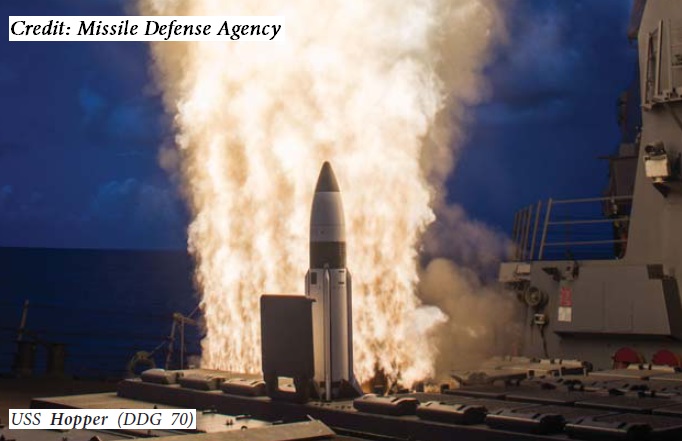
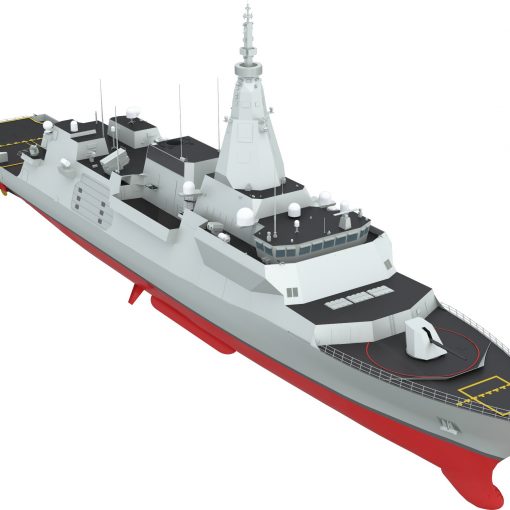
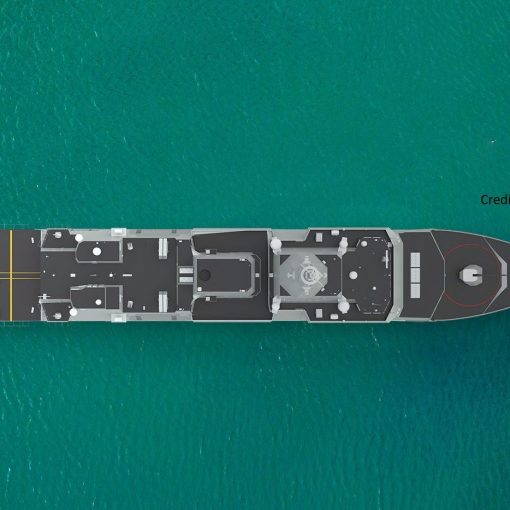
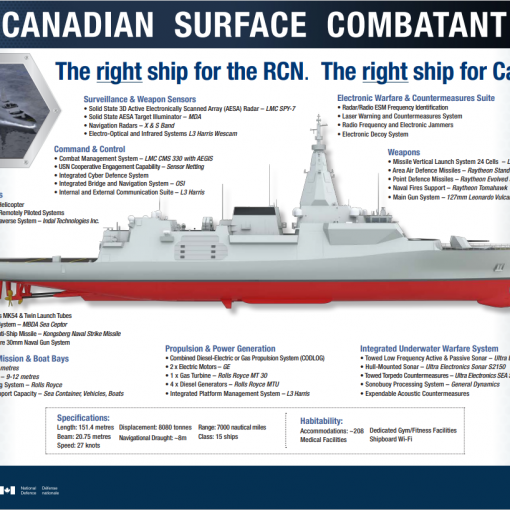
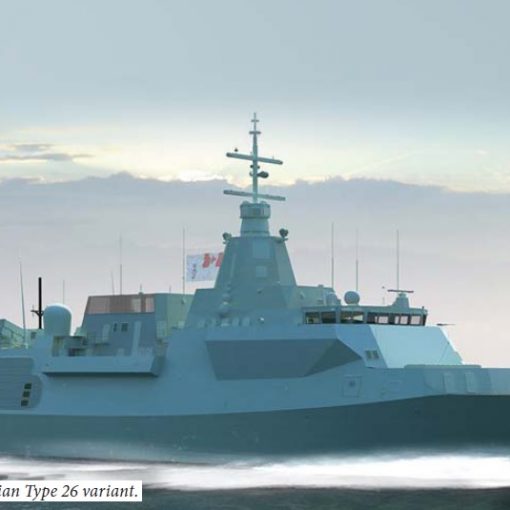
4 thoughts on “A Potential Political Brawl over BMD Capabilities on Canada’s CSC Type 26 Frigates?”
There is no debate needed here, install the best and plan for the future. What do you want our ships to do? Go back to analog radars, fire rocks with sling shots and spit balls? If we want to be part of NORAD and NATO then we have to get off our 1930s attitude.
Very Well Said Ron!!
Some interesting speculation here, but I have a few questions:
Q: How effective is the US naval BMD system?
So far, ship-based BMD appears to be oriented to very small-scale threats, such as from N. Korea and terrorist groups.
Q: Did the Canadian government approve a BMD mission for the CSC?
A LM senior official said Ottawa had requested a BMD capability for the CSC. If this is true, why hasn’t Ottawa acknowledged this simple fact?
Q: Is BMD a cost-effective use of a small, limited platform navy like the RCN?
At best, the RCN might be expected to field 1-2 ships for BMD on each coast at any one time, and with each warship carrying only a handful of SM-3 missiles, should Ottawa decide to procure them in the future.
The USN has questioned this 24/7/365 ‘picket ship’ role for its much larger missile capacity Arleigh Burkes generally. However, the USN does support its Rota, Spain 4-ship BMD mission; may add ships to it. Japan may also be having second thoughts about shipborne BMD.
Q: If Canada foresees a serious BMD role, then why not just join the US land-based system?
Hello Dan. You pose some very thought-provoking questions WRT a Canadian CSC Naval BMD capability. Firstly, the USN has been utilizing some of its Naval BMD capable Arleigh Burkes in a Land-Based BMD capability for several years now which, according to then Chief of Naval Operations (CNO) USN Admiral John Richardson (Retired) is the wrong way to be using these assets; operating in “tiny boxes” defending Land-Based units from potential adversaries who are now fielding missiles of increased ranges, accuracy, flexibility and survivability. Furthermore, the stocks of Navy-Wide SM3 Block IIAs & SM6’s have been stretched-to-the-limits recently. He does not say that Naval BMD is not effective, far from it. He indicates we must “re-think” the Naval BMD mission to determine how the Naval Aegis BMD capability can be best benefited to the Joint Task Forces at sea against Anti-Ship Ballistic Missiles (ASBMs). Shifting the Naval BMD focus will entail major changes to Naval Doctrine, Organization, Training Material, Leadership, Personnel and Facilities. It is clearly evident that the SM3 Block IIA & SM6 missile systems will be an integral part of any Aegis Naval BMD capability for the foreseeable future. See below:
https://www.usni.org/magazines/proceedings/2019/october/rethink-navy-ballistic-missile-defense
Your second question: “Did the Canadian government approve a BMD mission for the CSC?” I believe should read “Did the Canadian government “knowingly” approve an Aegis Naval BMD capability for the CSC Frigates? I believe the “fix-was-in” for this capability, however, Ottawa would never publicly acknowledge this for political reasons as it would be too embarrassing for them.
Your third question: Is BMD a cost-effective use for a small limited platform Navy like the RCN? The answer to that is, yes. Although I believe that all 15 CSC Frigates will have this BMD capability in some form, having this capability with SM3s Block IIAs & SM6s will not come with the first Batch of 3 CSC Frigates. With Batch II however, the next iteration of SM3s Block IIAs/SM6s will come with this capability. A Batch II of 4 CSC Frigates will be equipped with this. (2 East/2 West). This may require these ships becoming “arsenal” units as with the Australian proposed BAE Hunter class “plug-and-play” MK 41 VLS midships. This would necessitate removing the MMB capability for as many as 64 MK 41 ExLS VLS cells midships with 4 x 4 NSM missile systems as well. The final 8 CSC Frigates built may also have some SM3 Block IIA capability available for Naval BMD as well. I also believe Ottawa will approve the buy of SM3s Block IIAs & SM6s for the 4 “Arsenal’ CSC Frigate units and other units going forward.